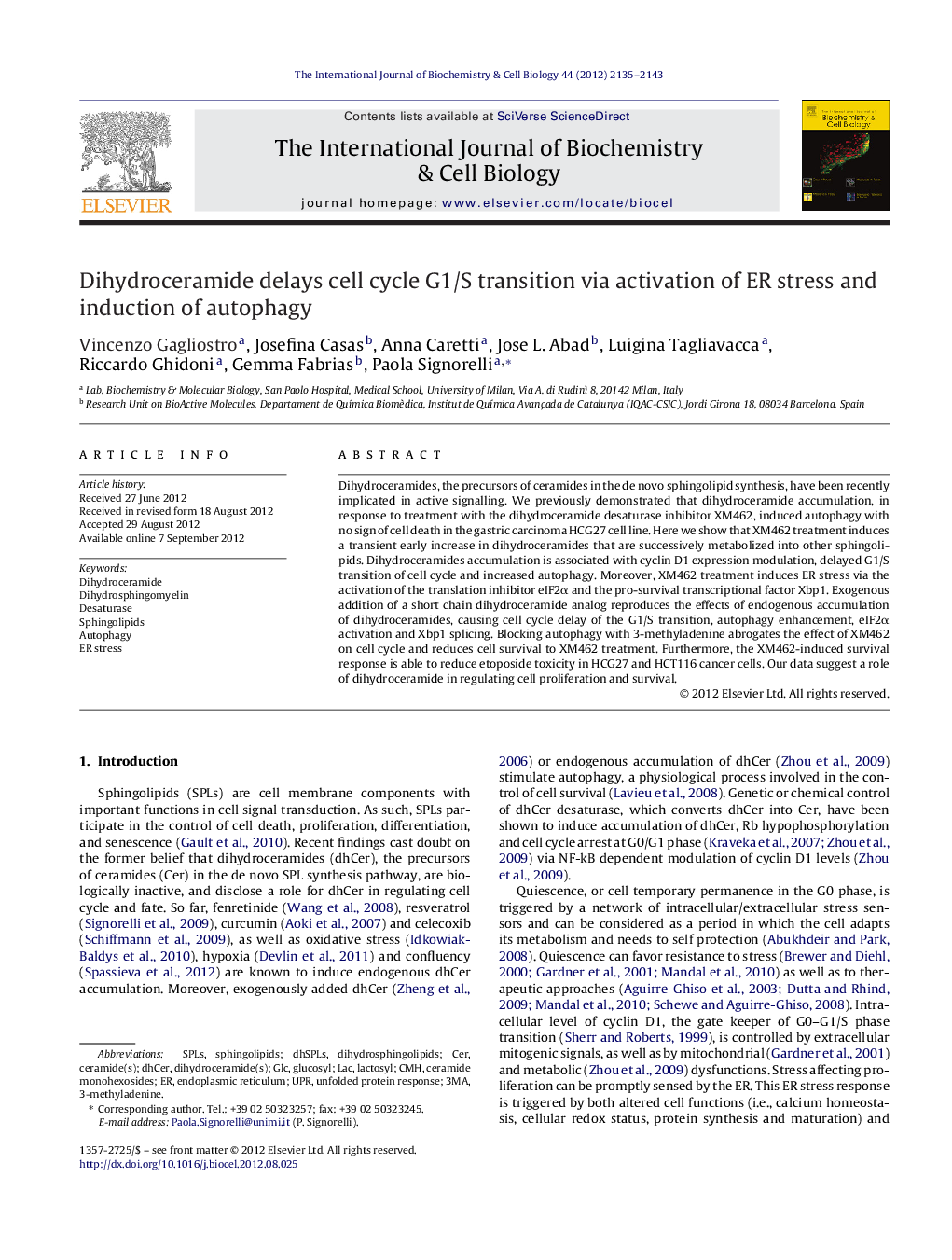| Article ID | Journal | Published Year | Pages | File Type |
|---|---|---|---|---|
| 1983840 | The International Journal of Biochemistry & Cell Biology | 2012 | 9 Pages |
Dihydroceramides, the precursors of ceramides in the de novo sphingolipid synthesis, have been recently implicated in active signalling. We previously demonstrated that dihydroceramide accumulation, in response to treatment with the dihydroceramide desaturase inhibitor XM462, induced autophagy with no sign of cell death in the gastric carcinoma HCG27 cell line. Here we show that XM462 treatment induces a transient early increase in dihydroceramides that are successively metabolized into other sphingolipids. Dihydroceramides accumulation is associated with cyclin D1 expression modulation, delayed G1/S transition of cell cycle and increased autophagy. Moreover, XM462 treatment induces ER stress via the activation of the translation inhibitor eIF2α and the pro-survival transcriptional factor Xbp1. Exogenous addition of a short chain dihydroceramide analog reproduces the effects of endogenous accumulation of dihydroceramides, causing cell cycle delay of the G1/S transition, autophagy enhancement, eIF2α activation and Xbp1 splicing. Blocking autophagy with 3-methyladenine abrogates the effect of XM462 on cell cycle and reduces cell survival to XM462 treatment. Furthermore, the XM462-induced survival response is able to reduce etoposide toxicity in HCG27 and HCT116 cancer cells. Our data suggest a role of dihydroceramide in regulating cell proliferation and survival.
